Snake plant flowers are not only captivating but also a rare sight, making them a prized addition to any indoor garden.
In this guide, we will explore the beauty and allure of snake plant flowers, and provide valuable tips on how to nurture your snake plant to encourage the appearance of these elusive blooms. With the right care, your snake plant flower can become a stunning focal point in your home.
Short Summary
Snake plant flowers are rare and delicate, symbolizing luck and prosperity in many cultures.
They require the right environmental conditions, watering & soil requirements for optimal growth & flowering.
Handle with caution as they contain poisonous properties that can cause nausea & vomiting in humans/animals.
The Allure of Snake Plant Flowers
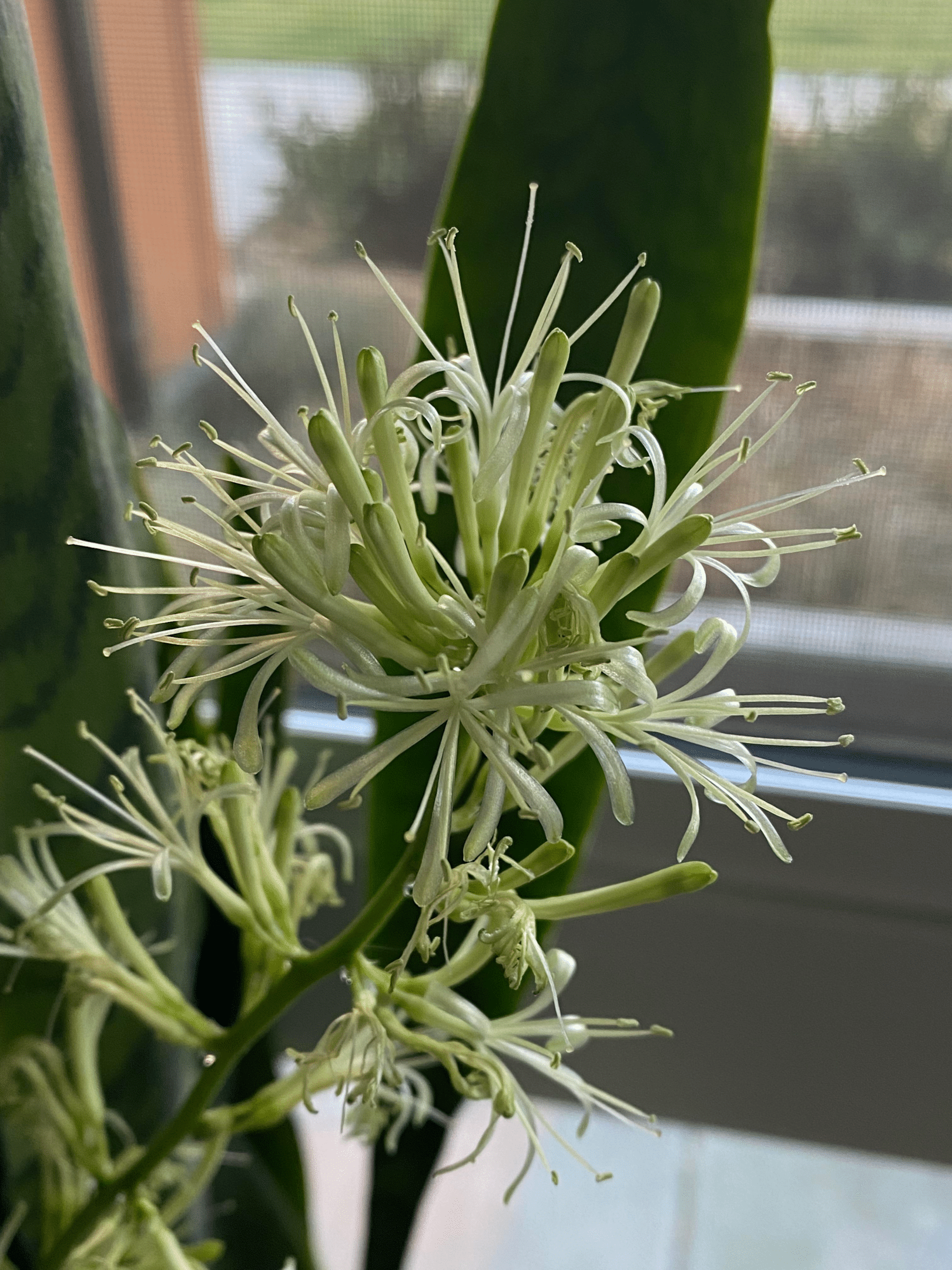
Snake plant flowers captivate plant lovers and collectors for several reasons. Their rarity makes them a precious and sought-after event in the world of indoor plants.
The delicate beauty of the flowers contrasts with the bold, sword-shaped leaves of the snake plant, creating a striking visual effect.
The Rarity of Snake Plant Flowers
Mother-in-law’s tongue, also known as snake plant, typically blooms once a year during the spring season, making their flowers a rare and cherished occurrence. The rarity of these flowers is due to the specific environmental conditions and attentive care necessary for mother in law’s tongue to produce flowers. In fact, it is estimated that only one in every one hundred snake plants will bloom.
This makes the blooming of a snake plant a special event, and one that should be celebrated.
Symbolism and Luck Associated with Snake Plant Flowers
Snake plant flowers hold a special place in various cultures, often considered symbols of luck and prosperity. In Feng Shui, the snake plant is believed to bring positive energy and balance to the home, further enhancing its appeal and mystique. These beliefs, combined with the rare beauty of snake plant flowers, make the snake plant flower lucky and a highly coveted addition to any indoor garden.
The snake plant is a unique and beautiful addition to any home, and its flowers are a beautiful addition to any home.
Characteristics of Snake Plant Flowers
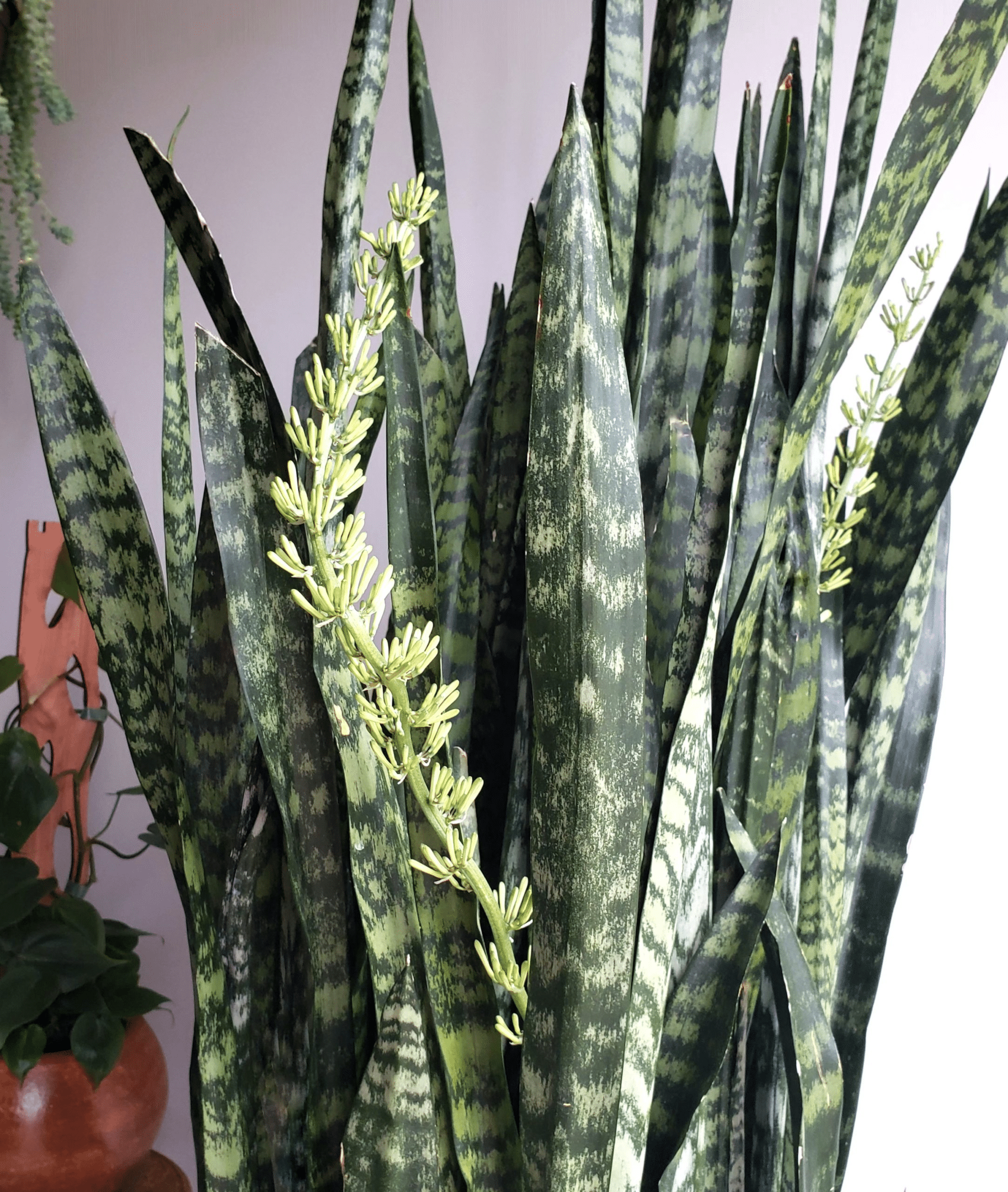
Snake plant flowers are visually striking, with delicate petals and tall flower stalks that can reach up to three feet in height. Their appearance adds a touch of elegance to the otherwise bold and architectural flowering snake plant, making it a popular choice for those looking to plant flower varieties in their home or garden.
The snake plant bloom is truly a sight to behold, especially when water snake plants bloom in all their glory.
In addition to their visual appeal, snake plant flowers also emit a pleasant fragrance and produce sweet nectar.
Visual Description of Snake Plant Flowers

The flowers of a snake plant consist of:
Tiny tubular flowers with thin petals
They grow in clusters at the base of the flower stalk
Depending on the species, snake plant flowers can exhibit white, cream, greenish-white, or yellow colors.
The Sansevieria Trifasciata, a type of snake plant, is known for its long flower stalk adorned with buds.
Fragrance and Nectar Production
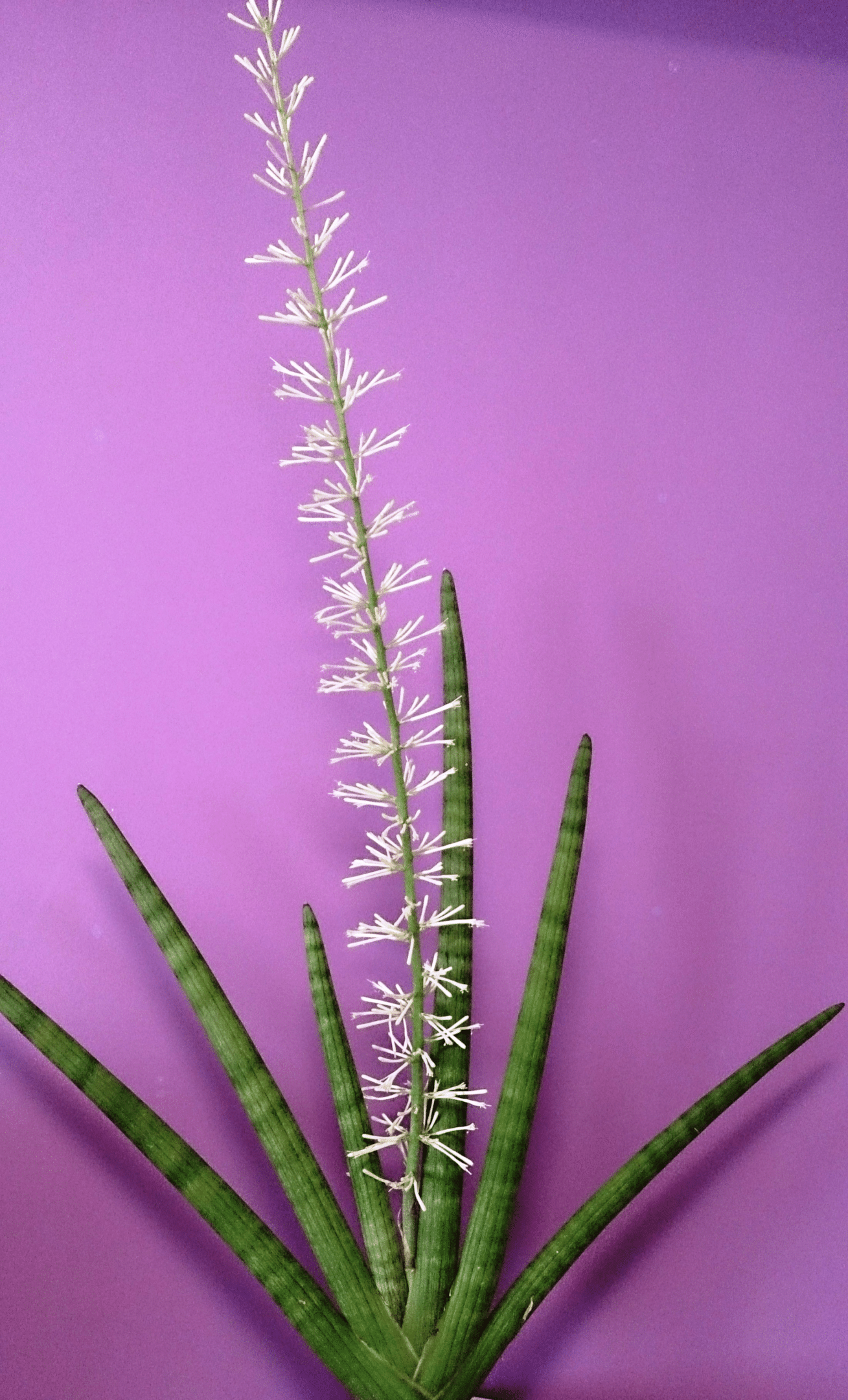
Snake plant flowers are known for their sweet, vanilla-like scent, reminiscent of jasmine. This pleasant fragrance serves a purpose beyond delighting our senses, as it also attracts insects with its sweet nectar.
This nectar not only attracts pollinators, but also adds a touch of nature’s magic to the already enchanting snake plant flowers.
Factors Influencing Snake Plant Flowering
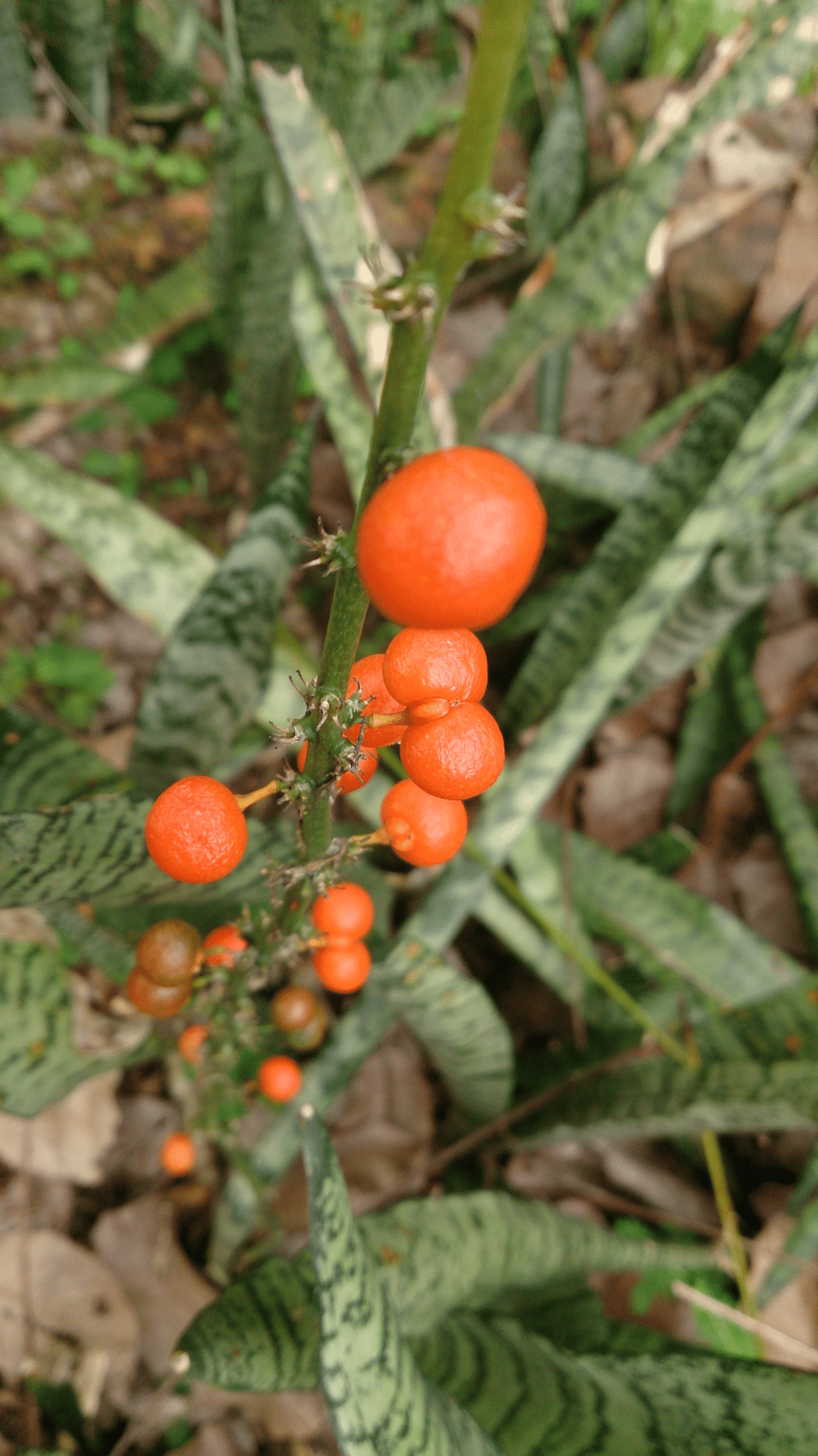
There are several factors that influence the likelihood of a snake plant flowering, including environmental conditions, watering and soil requirements, and the age of the plant. By understanding and managing these factors, you can increase the chances of witnessing the rare beauty of snake plant flowers.
Environmental conditions are important for snake plants to flower. They need a warm, humid environment.
Environmental Conditions
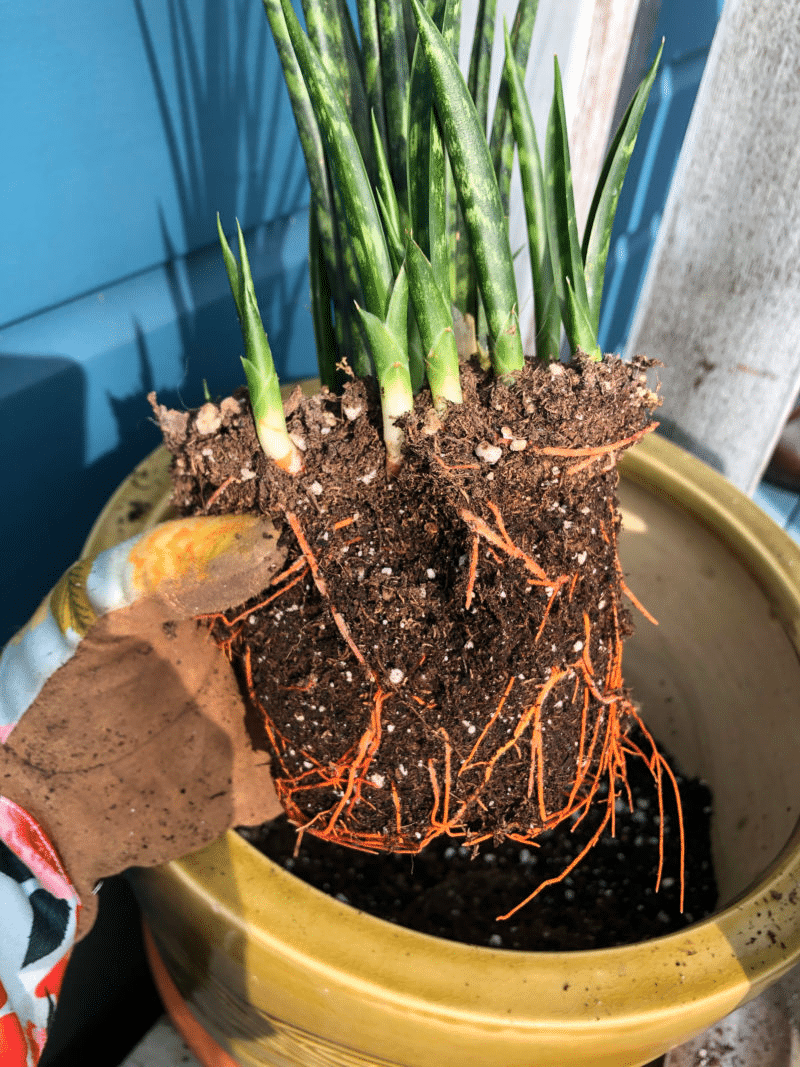
Light, temperature, and humidity all play a role in snake plant flowering. Ensuring your snake plant receives up to 6 hours of indirect light and a couple of hours of bright sunlight daily can significantly improve its chances of blooming and even induce flowering.
In addition, maintaining a stable environment with moderate temperatures and humidity levels can help create the ideal conditions for your snake plant to bloom.
Watering and Soil Requirements
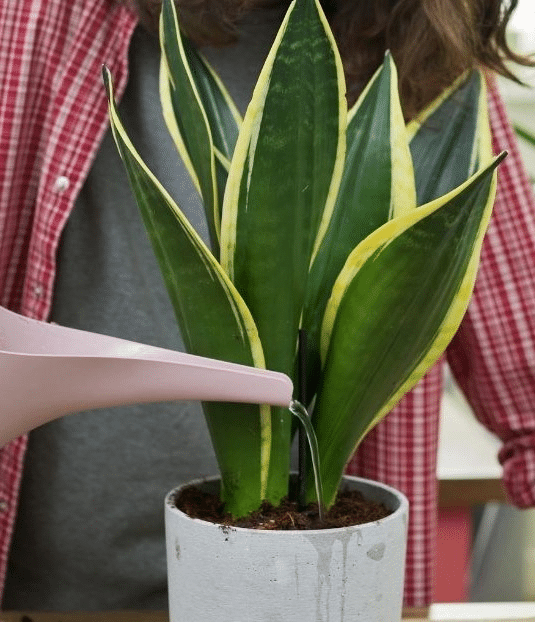
Proper watering and well-draining soil are essential for encouraging snake plant blooms. Snake plants prefer light, well-drained soil, which allows their roots to breathe and prevents root rot.
When it comes to watering, it is crucial to strike a balance between providing adequate hydration and avoiding overwatering, as excess water can lead to root rot and other issues.
To ensure that your snake plant is getting the right amount of water, it is important to ensure that your snake plant is getting the right amount of water.
Age and Maturity of the Plant

Older, more mature snake plants are more likely to flower than younger plants. This is because older plants have had more time to develop and are better equipped to produce flowers. While there is no definitive age requirement for a snake plant to flower, it is less common for new and young plants to do so.
The probability of flowering increases as the plant matures, which can take 2-3 years.
How to Encourage Your Snake Plant to Bloom
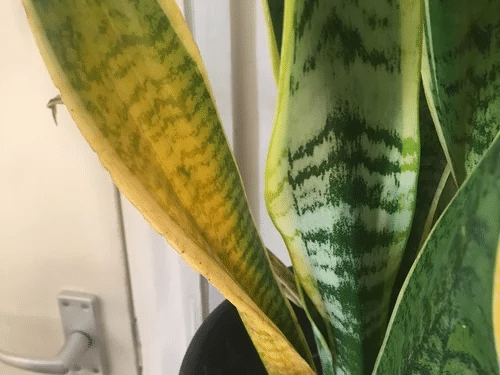
To encourage your snake plant to bloom, it is important to manage stress factors and provide optimal care. By creating the right balance of environmental conditions, watering, and soil requirements, you can maximize the chances of witnessing the mesmerizing sight of snake plant flowers.
The key to success is to provide the right amount of light, water, and soil. Snakes eat them.
Managing Stress Factors
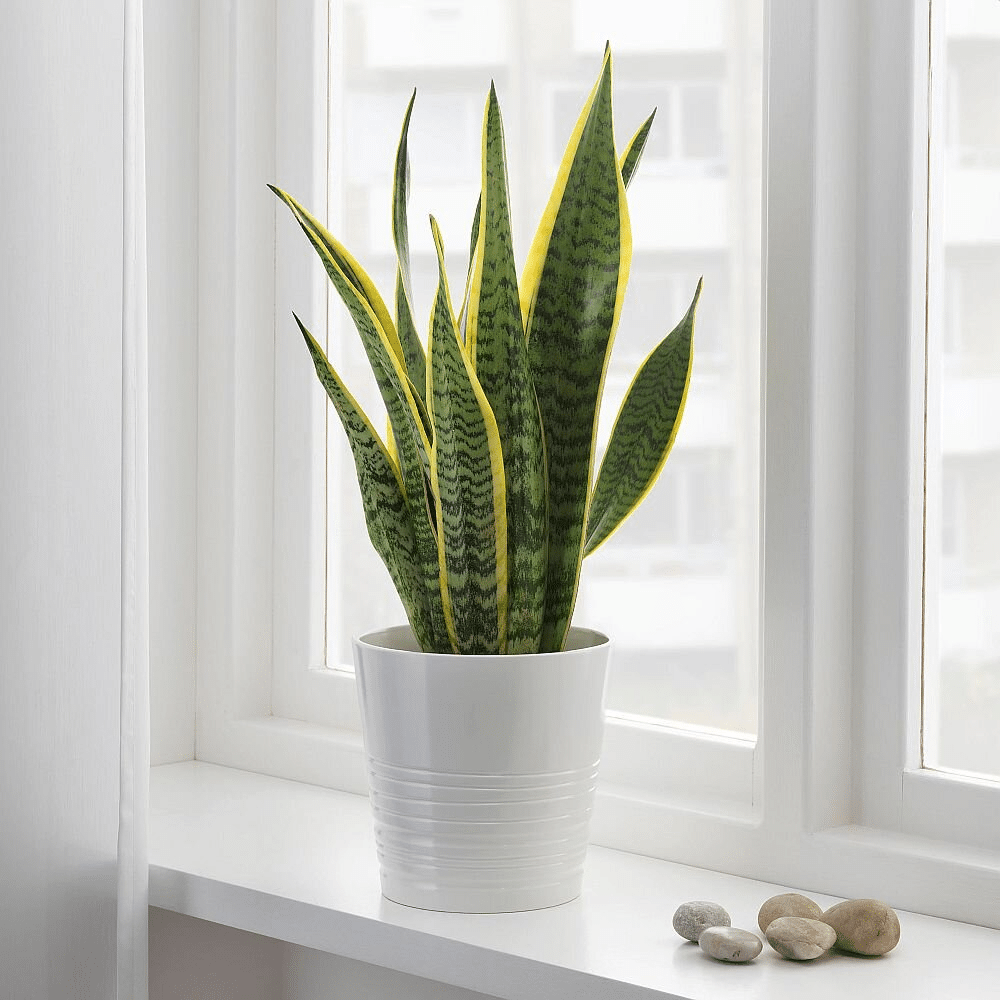
Managing stress factors such as light exposure and watering can help stimulate flowering in snake plants. Ensuring your snake plant receives the right amount of light and water can trigger its natural response to produce flowers.
Additionally, keeping the plant slightly root-bound can also encourage blooming, as the plant senses stress and allocates its resources to producing flowers for reproduction.
Optimal Care for Flowering Snake Plants

Providing the right balance of care can increase the chances of your snake plant flowering. Here are some tips:
Keep your snake plant in a well-lit area with indirect sunlight.
Water it sparingly to prevent root rot.
Use well-draining soil to avoid waterlogged roots.
By following these guidelines, you can help your snake plant thrive and potentially produce flowers.
Additionally, using a light, well-drained soil and fertilizing it with a balanced fertilizer during the growing season can further enhance the likelihood of your snake plant producing those coveted blooms.
Potential Concerns with Snake Plant Flowering
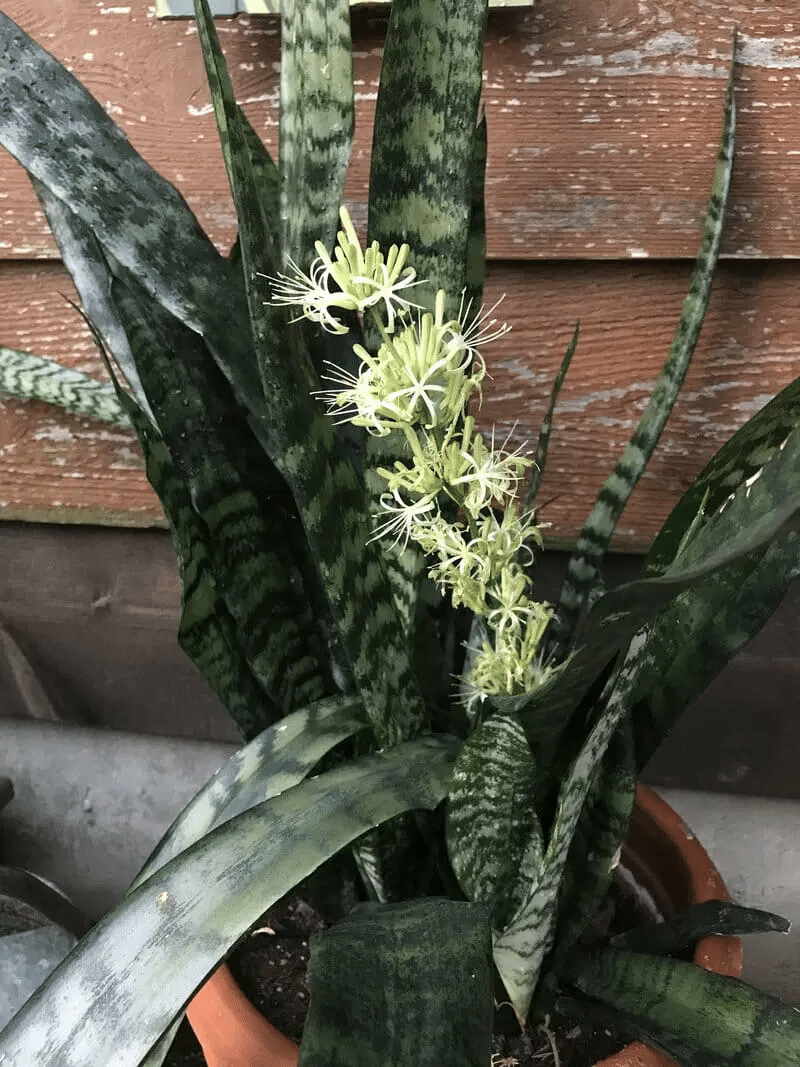
While snake plant flowering is generally considered a positive event, there are some potential concerns to be aware of. Flowering can indicate stress in the plant, and the plant may allocate its resources to producing blooms rather than new foliage.
However, even though flowering can be a sign of stress, it is not typically detrimental to the plant’s overall health.
Is Flowering Harmful to the Plant?
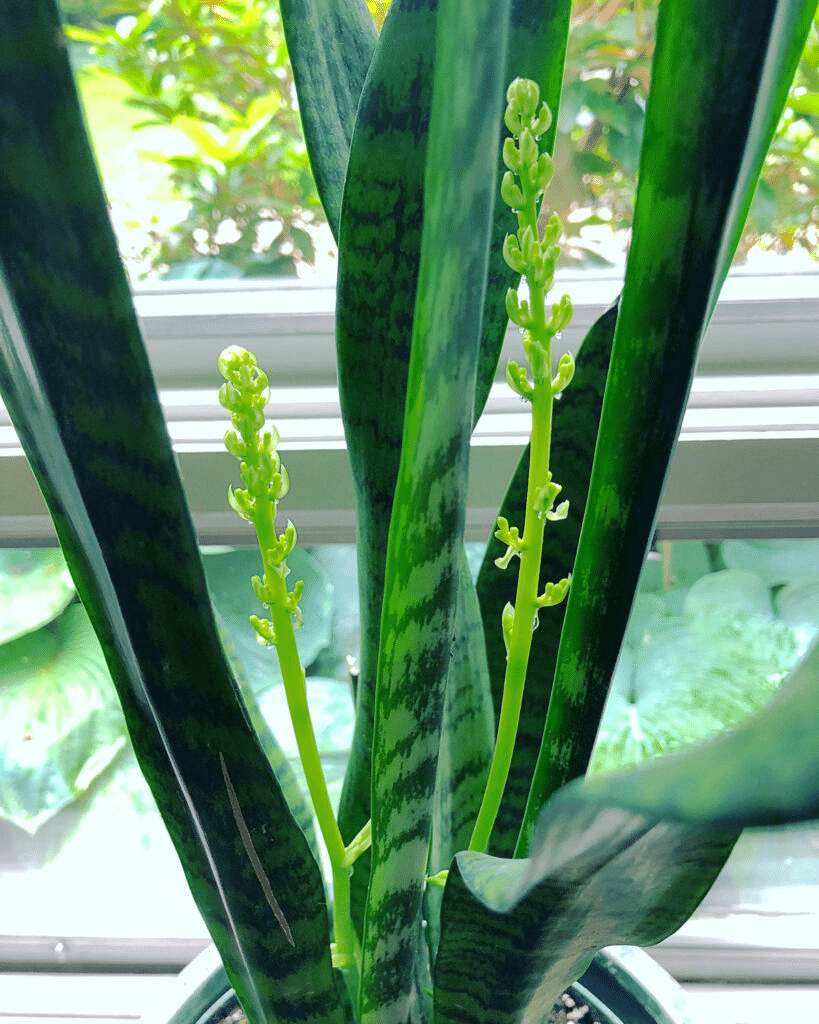
As mentioned earlier, flowering in snake plants can indicate stress, but it is generally not harmful to the plant’s overall health.
While the plant may allocate its resources to producing blooms instead of new foliage, this is a natural response and does not typically cause long-term damage to the plant, nor does it mean that snake plants die.
In fact, once the plant bloom has occurred, the flowers transform into orange berries, adding another layer of visual interest to the plant.
Poisonous Properties of Snake Plant Flowers
Snake plant flowers possess toxic properties that can lead to nausea and vomiting in both humans and animals. As a result, it is essential to exercise caution when handling snake plant flowers and to keep babies and pets away from the plant, particularly the flowers, long stems, leaves, and berries.
By taking these precautions, you can enjoy the beauty of your snake plant flowers while ensuring the safety of your loved ones when you plant outdoors.
Summary
In conclusion, cultivating the beautiful snake plant flower requires a delicate balance of environmental factors, watering and soil conditions, and the right level of plant maturity. By managing stress factors and providing optimal care, you can increase the likelihood of witnessing the rare, enchanting sight of snake plant flowers in your home.
So, take the time to nurture your snake plant, and perhaps one day, you too will be rewarded with the elusive blooms that plant enthusiasts cherish.
Frequently Asked Questions
Why is my snake plant flowering?
Your snake plant is likely flowering because it has been slightly stressed due to less attention, high light intensity, and infrequent watering. Stress can cause plants to become root-bound and bloom new shoots.
As such, it’s important to ensure your snake plant is getting adequate care in order to keep it healthy.
Is it rare for snake plants to flower?
Snake plants are known for their hardy nature and are usually kept for the long, strong leaves. While it is not common for them to flower, it is possible as these plants have been known to bloom on occasion. Therefore, it is not entirely rare for snake plants to flower.
The occurrence of a snake plant flowering is uncommon, making it a rare event. Though some plants may never produce blooms, those that do tend to flower occasionally in the spring. As a result, it is not uncommon for snake plants to flower, but it is rare.
Does mother in law plant bloom?
Yes, although it is uncommon, mother in law plants can indeed bloom when they are grown indoors. Different types of the plant produce flower stalks with small flowers of various colors such as creamy white, yellow, pink, or green.
How to care for a snake plant?
Caring for a snake plant is relatively straightforward. Water it every two weeks or when the top soil feels dry, make sure it’s in a warm spot and occasionally wipe the leaves with a damp cloth.
For a more thorough care routine, provide your snake plant with lots of sunlight and repot in spring using houseplant compost. With these simple steps, you can ensure your snake plant thrives.
How to care for snake plant?
Taking good care of your snake plant is essential to ensure its health and longevity. To do so, you should water the plant every two weeks when the top two inches of soil feel dry, provide adequate sunlight, keep it in a warm spot above 10°C, repot with houseplant compost in spring if necessary, and wipe leaves occasionally with a damp cloth.
It is important to remember that snake plants are hardy and can tolerate a wide range of conditions. However, providing the right environment and care will help your plant thrive.





No Comments